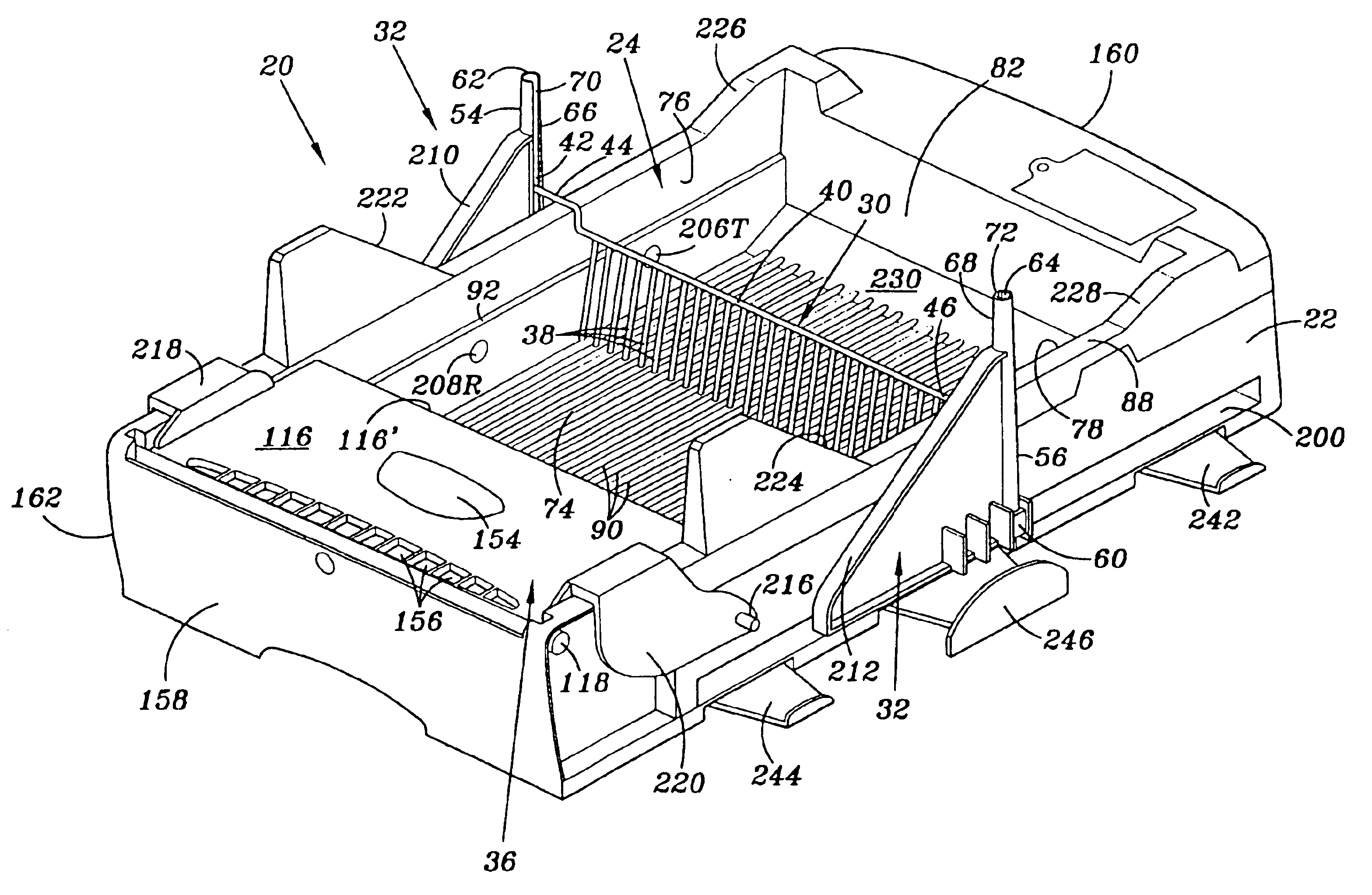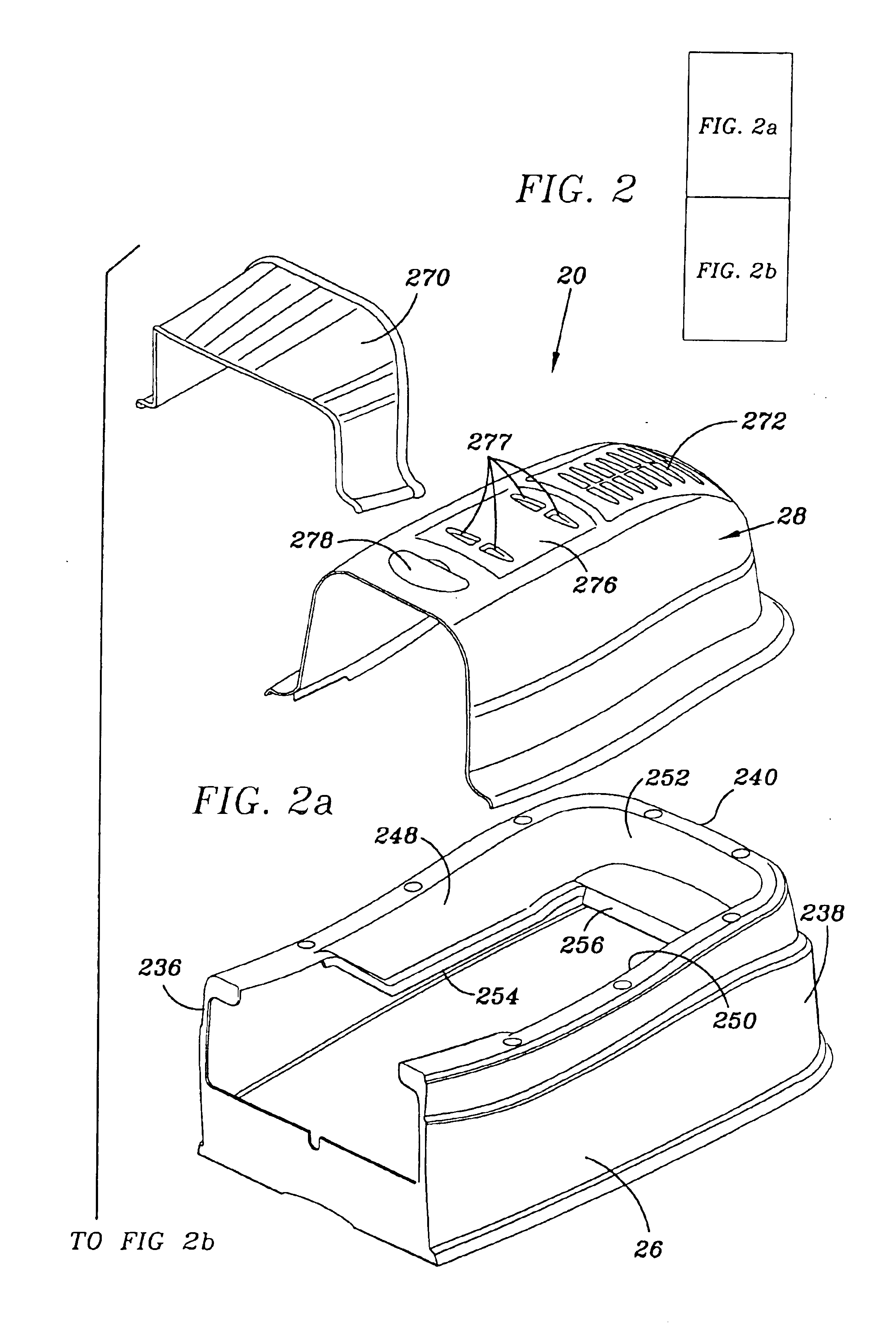Rake for a self-cleaning litter box
a litter box and self-cleaning technology, applied in the field of litter boxes, can solve the problems of automatic litter boxes remaining difficult to clean, pet owners are reluctant to regularly service these litter boxes, and pet owners who frequently travel cannot do so
- Summary
- Abstract
- Description
- Claims
- Application Information
AI Technical Summary
Benefits of technology
Problems solved by technology
Method used
Image
Examples
Embodiment Construction
FIGS. 1-3 illustrate self-cleaning litter box 20. In a preferred embodiment, litter box 20 includes a base 22, a litter pan 24 for holding a supply of litter, a lower hood 26 and an upper hood 28. Litter box 20 further includes a rake 30 disposed in litter pan 24, a rake support assembly 32 to support rake 30, a drive assembly 34 (FIG. 7) to move the rake while installed in the litter pan, and a waste box 36 to receive waste clumps from litter pan 24.
Referring to FIGS. 3 and 4, litter pan 20 is illustrated connected to base 22 with lower and upper hoods 26 and 28 removed. Referring specifically to rake 30, rake 30 includes a plurality of tines 38 attached to a cross support bar 40. Cross support bar 40 includes a first end 42 having an offset portion 44 and a second end 46 having an offset portion 48 (FIG. 4) to engage litter pan 24. Cross support bar first and second ends 42 and 46 each contain a rake arm 50 and 52 to support bar 40 when connected to litter box 20. Rake 30 is prefe...
PUM
 Login to View More
Login to View More Abstract
Description
Claims
Application Information
 Login to View More
Login to View More - R&D
- Intellectual Property
- Life Sciences
- Materials
- Tech Scout
- Unparalleled Data Quality
- Higher Quality Content
- 60% Fewer Hallucinations
Browse by: Latest US Patents, China's latest patents, Technical Efficacy Thesaurus, Application Domain, Technology Topic, Popular Technical Reports.
© 2025 PatSnap. All rights reserved.Legal|Privacy policy|Modern Slavery Act Transparency Statement|Sitemap|About US| Contact US: help@patsnap.com



